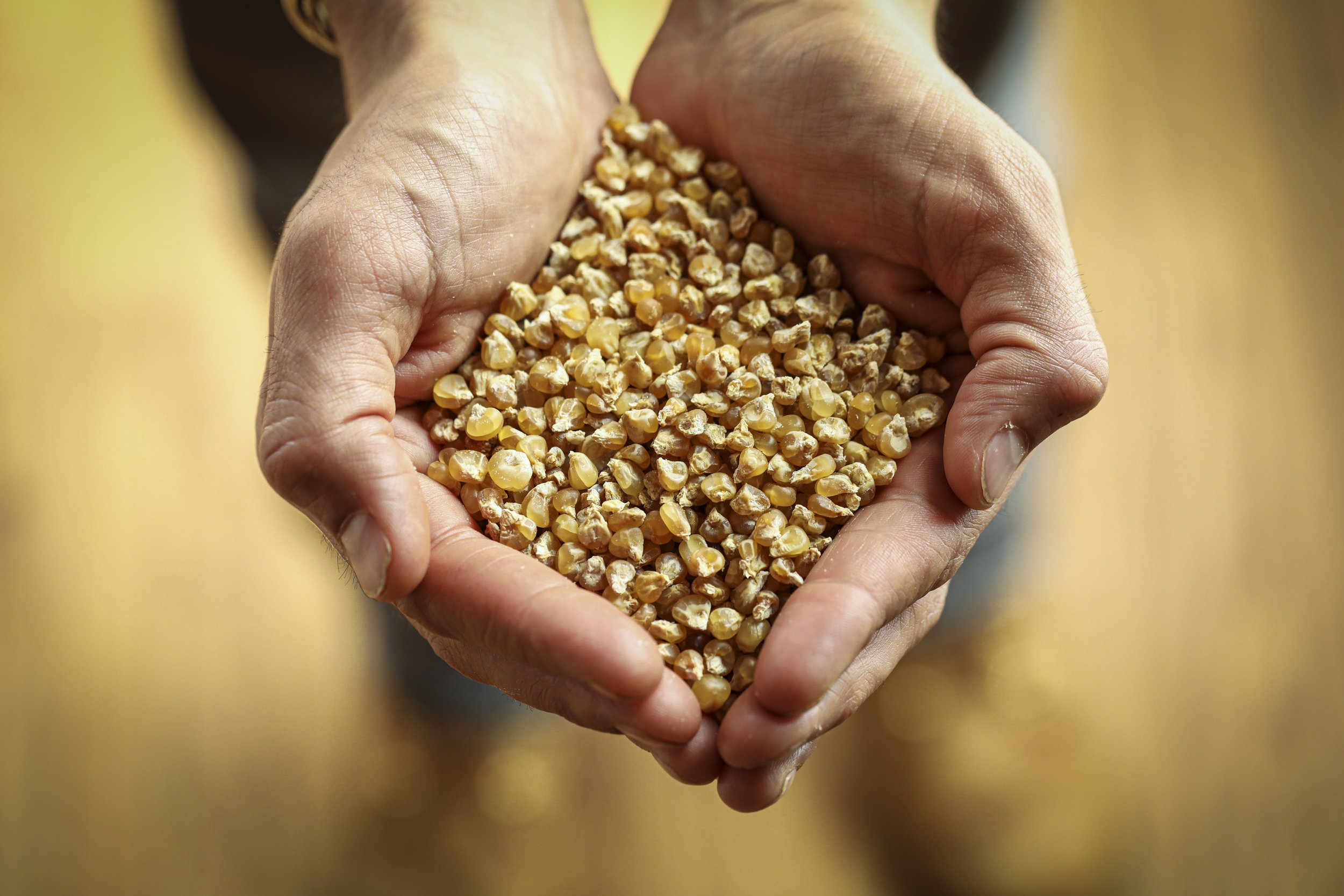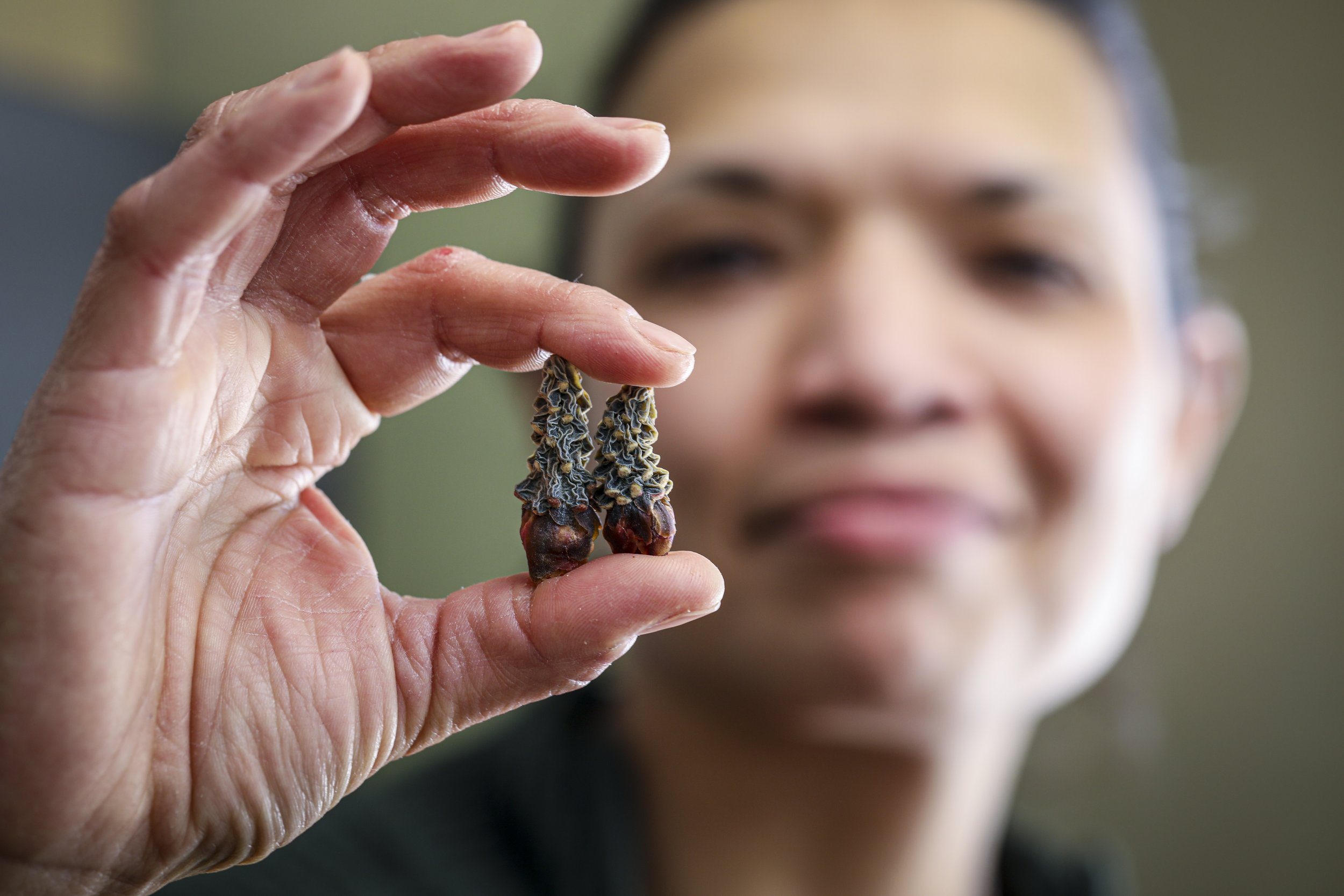Pause and pondr
WHY INDIGENOUS FOOD HAS SPECIAL RESONANCE FOR NATIVE PEOPLE
Knowledge and understanding of first foods have been lost through generations of assimilation. For many tribes bringing back pre-colonization foods is an important way to reconnect with their traditions and past.
DID YOU KNOW?
The Indigenous peoples used 500 plant species in their diets. Source: University of Toronto Food Services: First Nations Foodie Facts
WHAT YOU’LL LEARN
Examine how Native Americans preserve food traditions
Understand the meaning of ‘Indigenous food’
What is the definition of Indigenous food?
The meaning of Indigenous food varies among tribes, chefs, scholars and food activists in America.
As Devon Mihesuah, a scholar, author and member of the Choctaw Nation, explains, “Indigenous foods are the edible items that were in this hemisphere prior to contact with the colonizers.”
Mihesuah, co-editor of “Indigenous Food Sovereignty in the United States,” adds, “Foods were eaten raw, roasted, dried or put into soups. Very simple. ‘Traditional’ foods do not include frybread, grape dumplings made with butter, white flour and sugar or chocolate cake.”
But terminology on Indigenous food varies — Indigenous food is also called first foods or pre-colonization diets — as does the debate around the type of foods.
Though popular, frybread, for instance, is somewhat contentious, and its origins are disputed. It is generally believed that the food arose during the forced displacement of the Diné, hundreds of miles from their territory during the mid-1800s.
However, Freddie Bitsoie, the executive chef of Mitsitam Native Foods Cafe, located inside Washington, D.C.’s National Museum of the American Indian, has been researching the origins of frybread for his recently released co-authored cookbook, “New Native Kitchen: Celebrating Modern Recipes of the American Indian.”
“It is my belief that (Native Americans) knew how to make frybread before they were colonized and displaced,” he says.
To Bitsoie, the term “Indigenous food” is simply “where the food actually comes from,” meaning it’s native to the land. Bitsoie, stresses that “because of colonization, people were forced out of their Indigenous land (so) Indigenous food is not in relation to Indigenous people because people moved around.”
Has cultural appropriation impacted Indigenous food?
“Indigenous chefs combine foods from different cultural areas,” says Mihesuah, the Cora Lee Beers Price teaching professor in international cultural understanding at the University of Kansas. “For example, moose with quinoa. One could argue that is cultural appropriation and not really traditional. And it is not realistic to have a huge menu with only pre-contact ingredients, so post-contact items such as eggs, butter, spinach, garlic and so on are added. And, pre-contact ingredients can be very expensive. Bison, elk, moose, bear, antelope, alligator and so on are only available to those who can afford it.”
But opinions diverge on the cultural appropriation of food. Appropriation, when it comes to cuisine, is hard to claim, says Bitsoie.
“I make a killer osso buco (but) I don’t have any Italian chef calling me and saying you don’t have a right to cook that because you’re not Italian. … Food is one of the products of culture that we are publicly forced to share.”
In recent years, has Indigenous food gained more interest?
Not so much among the general population, notes Mihesuah, who is a staunch advocate for food sovereignty among Native Americans. Food sovereignty is defined as the right for Native peoples for food and agricultural self-sufficiency and preservation of customs around food and food production. However, among Native Americans, “We’ve seen an increase in tribal farms, community gardens, curriculums and food summits. These initiatives are usually started among individuals and grassroots groups,” says Mihesuah.
Mihesuah is cautious about the repercussions of Indigenous food becoming more popularized.
But Bitsoie hopes an increase of media coverage, the rise of conversations around the cuisine within the community, and the larger selection of books and cooking classes as indications of a greater, and positive, overall awareness about Indigenous food.
“When you start learning about the cuisine, you’re also going to learn more about the people and where the foods come from,” says the foodservice veteran. In turn, that will amplify Native American culture. “It’s a way that we can learn from each other.”
Pondr This
What are some traditions you or your family have around food?
What foods would you consider to be Indigenous?
Have you ever tried any of these foods?
FOR LEADERS
How does your workplace integrate traditions from all of your employees’ backgrounds?
What foods does your workplace offer to employees?
What is the relationship between food and community? How can your workplace create community through shared rituals of food and eating?
Explore The Stories
INDIGENOUS FOOD: A toolkit
For nourishment, there’s nothing like ‘first foods’
‘When you eat my food, you will know the journey’
THE FOODWAYS OF AMERICA’S INDIGENOUS PEOPLE
When someone asks “what’s more American than hamburgers and apple pie,” perhaps the response should be “corn, beans, bison and wild rice.”
The food ways of America’s Indigenous people relied heavily on what was available and abundant while in season, and what could be grown or harvested in myriad environments. In the desert Southwest, beans, berries, seeds, deer and rabbit were often on the menu. In the Pacific Northwest, whale, seal, caribou, seaweed and eggs formed a large part of a traditional diet. Over the years, some of those traditional foodways and ingredients have gone by the wayside, Indigenous chefs are looking to revive them, incorporating a modern take on those ancient ingredients. It may never become the newest food trend to be mainstreamed into Middle American culture, but the food ways of America’s original inhabitants are worth a fresh look.
Originally published on iPondr.com March 26th, 2021
-
Description text goes here
Topic in Review
Summary: We explored the topic of Indigenous food, and how the definitions and terminology can vary, as do the types of food that are considered to be Indigenous.
Interest in the preparation of these foods and preservation of Native food traditions has been growing, as has an effort to regain knowledge that was lost through forced relocations that upended traditional Native food customs. We heard from an Indigenous chef and a scholar on the nuances and debates around Indigenous food and how several tribal communities are advocating for food sovereignty.
Continue Your Journey
Supporting farms, organizations and other community initiatives helps to further Native cultural food traditions.The Cheyenne River Youth Project based in Eagle Butte, South Dakota, supports Native children and families and holds classes and workshops on Indigenous plants and gardening and cooking.
Near Minneapolis, Minnesota, Dream of Wild Health also offers educational programs and operates a CSA and produce for farmer’s markets that is cultivated at their 10-acre farm by Native American producers. Also in Minnesota is North American Traditional Indigenous Food Systems, which is dedicated to addressing economic and health crises within Native communities. They’ve established an Indigenous Food Lab, which trains Native youth on the food service industry as well as identification cultivation, and preparation of Indigenous foods.
Serving the Navajo Nation in the Four Corners region of Arizona, New Mexico, Colorado and Utah is Navajo Ethno-Agriculture, an education farm which provides accredited and non-accredited programs for Native families, educators and students (adults and youth) to learn traditional agricultural practices.
Resources to learn more about Native foods and history include:
— “Gather” is a 2020 documentary that follows four different tribes in their mission to reclaim their cultural traditions. It features food activists including chef Nephi Craig from the White Mountain Apache Nation in Arizona and the founder of Native American Culinary Association.
— “New Native Kitchen: Celebrating Modern Recipes of the American Indian” by Freddie Bitsoie explores traditional foods and modern methods through 100 recipes that include chocolate bison chili and sumac seared trout with onion and bacon sauce and clam soup from the Northeastern Wampanoag.
— ”Indigenous Food Sovereignty in the United States: Restoring Cultural Knowledge, Protecting Environments, and Regaining Health,” edited by Devon A. Mihesuah and Elizabeth Hoover, is a sweeping collection of writings from scholars in history, ethnobotany, nutrition, and biology, among other subjects, and chefs, farmers and activists about Indigenous food sovereignty and charting a more just and sustainable future.





















